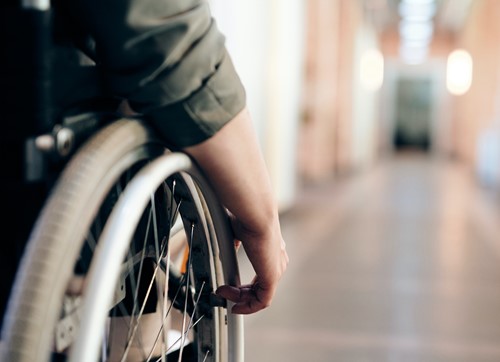
Photo by Marcus Aurelius via Pexels
Approximately 61 million adult Americans have some form of a disability, according to the CDC. That figure equals one out of every four of our community members. Add the fact that the U.S. Census indicates the country is headed for a “gray tsunami” with upwards of 73 million people entering retirement age. It stands to reason accessible living spaces will be in increased demand.
That’s why new construction home builders would be wise to consider modifying bathrooms to ensure accessibility for aging community members and those with disabilities. Whether prospective homeowners require these enhancements now or in the future, wheelchair accessible showers are also beautifully spacious. These are top things to consider when designing a wheelchair accessible shower.
Key Design Elements of an Accessible Shower
Spaciousness and room to move about freely are top considerations when creating a wheelchair-friendly bathroom. Blueprints for the new construction home may consider making this bathroom the square-footage equivalent of a bedroom or home office. This facet tends to make such a bathroom luxurious. Along with accessories such as seats and specialized gadgets, these are ways to improve shower accessibility.
- Curbless Showers: Eliminating prefabricated shower installs or tile versions with lips is an essential safety element. They present an unnecessary challenge for people using wheelchairs. They are also a proven safety risk for people with walkers. Curbless showers simply employ waterproof flooring with a grade that directs the liquid to a drain. Not only are these among the best shower options, but they also make bathrooms appear even more spacious.
- Non-Slip Surfaces: If you ever went to a public school that used walk-through showers after gym class, you probably remember someone slipping and falling on the tile floor. Although tile can be a reasonable flooring material in a wheelchair accessible shower, it must also possess non-slip qualities. Some routinely used floor materials to consider include non-slips such as rubber, marble mosaics, feathered concrete, and seamless vinyl, among others. A long as the sub-floor can hold up to any potential water penetrations, the design can succeed.
- Interior Shower Space: In many wheelchair accessible layouts, the shower tends to be the centerpiece. That’s largely because people may need to bring their wheelchair or walker into the space. Designs should account for at least a 36-inch entry and enough square footage to turn around. Wheelchair turnaround requirements typically call for a minimum of 60 inches. However, more space is advisable.
- Grab Bars: A minimum of two to three 1.25 to 1.5 inch-thick grab bars are generally required for a wheelchair- or walker-accessible shower. U-shaped grab bars on swivels may also be installed for enhanced stability.
Some fine details to consider in an accessible shower layout include installing an anti-scald mixing valve that keeps temperature spikes in check. Maximum temperatures for this style typically top-out at 120 degrees. The layout should also position appropriate space to house hair care and bathing products, as well as towels and washcloths. This type of shower differs from standard bathrooms that place things like towel hooks outside the space. These are typically placed away from the showerhead and floor space that drains water.
Overhead lights and heat lamps on timers also add value and make showering more relaxing. It’s also essential to keep in mind that loose plastic shower curtains tend to create a trip and fall hazard. If your accessible shower requires a divider, plexiglass doors and panels offer a safe solution.
In terms of accessible showers in new construction, these spacious designs are not strictly for aging Americans and people with mobility limitations. Homes that include spacious and beautiful showers and bathrooms increase values and are highly sought after resale properties.
About the Author

Robin Anderson Real Estate
“My Passion is people and relationships and I promise to provide my clients with exceptional service tailored to their individual needs.” -Robin Anderson
Georgia native, Robin Anderson brings her passion for people and her love of homes to work for her clients. She and her husband, Andy, have been married for over 30 years and have two adult children, Ellen and Drew. They currently live in Fulton County, but Robin has lived and invested in properties throughout metro Atlanta as well as helped clients buy and sell. She has been integral to many real estate endeavors including designing and building several custom homes, remodeling homes, subdividing land, managing rental properties, and buying and selling properties. She spent her first 3 years in real estate working with a new home builder, and she has spent the last 6 years working with buyers and sellers in her own community. Robin is highly motivated but sensitive to the fact that buying and selling homes can be an emotional experience, so she makes it a priority to keep clients closely informed throughout the process and strives to produce quick results. She appreciates the opportunity to help her clients navigate the real estate process, and she aspires to deliver quality customer service that is both informative and positive. She is driven to provide outstanding service for her clients and she is focused on building successful and lasting relationships with her clients. This personalized service earns her enthusiastic referrals from clients she is pleased to call friends.Edit
